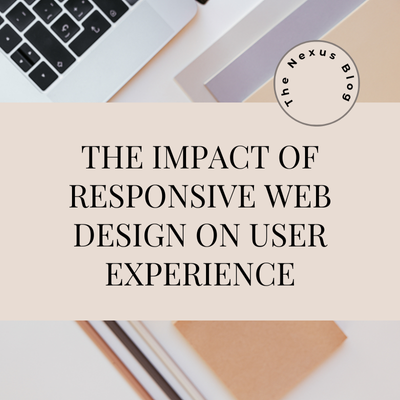In today’s digital landscape, having a responsive web design is no longer a luxury but a necessity. With an increasing number of users accessing the internet via mobile devices, the demand for mobile-friendly design has skyrocketed. Let’s delve into how responsive web design significantly enhances user experience (UX) and why it should be a top priority for businesses.
What is Responsive Web Design?
Responsive web design is an approach to web development that ensures a website’s layout and content adapt seamlessly to various screen sizes and devices. This adaptability is achieved through flexible grids, images, and CSS media queries. The goal is to provide an optimal viewing experience—easy reading and navigation with minimal resizing, panning, and scrolling—across a wide range of devices, from desktop computer monitors to mobile phones.
Enhancing User Experience Through Responsive Web Design
1. Consistency Across Devices
One of the most significant advantages of responsive web design is the consistent user experience it offers across different devices. Whether a user visits your site on a smartphone, tablet, or desktop, they’ll encounter a unified design and navigation system. This consistency is crucial for building trust and brand loyalty.
2. Improved Accessibility
Responsive web design ensures that your website is accessible to all users, regardless of the device they are using. Mobile-friendly design is particularly important as mobile traffic continues to surge. A website that functions smoothly on mobile devices caters to a broader audience and enhances overall user satisfaction.
3. Faster Load Times
Website responsiveness plays a critical role in page load speed, especially on mobile devices. Responsive web design techniques, such as optimizing images and using flexible grids, contribute to faster loading times. Quick load times are vital for retaining visitors and reducing bounce rates, directly impacting your website’s UX.
4. SEO Benefits
Search engines like Google prioritize mobile-friendly websites in their rankings. A responsive web design improves your site’s search engine optimization (SEO) by ensuring it meets Google’s mobile-first indexing criteria. Higher search rankings increase visibility, driving more organic traffic to your site and enhancing user experience.
5. Cost-Effective and Easier Maintenance
Maintaining a single responsive website is more cost-effective and less time-consuming than managing separate sites for different devices. It simplifies updates and maintenance, ensuring that any changes made are automatically applied across all device versions. This efficiency not only saves time and resources but also ensures a consistent UX.
UX Optimization Through Responsive Design
Implementing responsive web design is a strategic move towards UX optimization. Here are some best practices to consider:
Prioritize Content: Ensure that the most important content is easily accessible, regardless of the device. Use a mobile-first approach to design, focusing on the essential elements first.
Flexible Images and Media: Use CSS to adjust the size of images and media files according to the screen size. This flexibility ensures that images load correctly and do not disrupt the user experience.
Touch-Friendly Navigation: Design buttons and interactive elements to be easily clickable on touchscreens. This practice enhances usability on mobile devices.
Testing Across Devices: Regularly test your website on various devices and screen sizes to identify and resolve any issues. This testing ensures a smooth and consistent UX.
Conclusion
Responsive web design is a crucial element in creating user-friendly websites that cater to today’s diverse digital landscape. By focusing on mobile-friendly design, optimizing for website responsiveness, and prioritizing UX, businesses can provide a superior user experience that drives engagement and loyalty. Embrace responsive web design to stay ahead in the competitive online market and meet the evolving needs of your audience.
___________________________________________________________
Feel free to reach out to us at Zomi Nexus for expert advice and services on implementing responsive web design for your business. Let’s make your website user-friendly and accessible to all!











